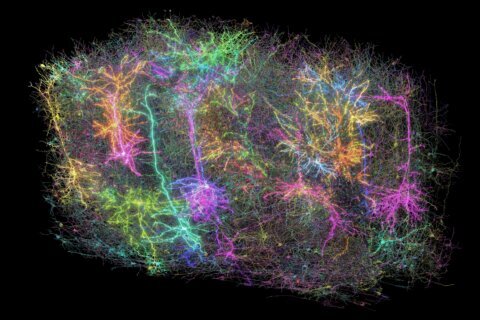Using a fork to eat, zipping up a sweatshirt and turning a doorknob are all things most people do without thinking, but children spend their early years developing and refining these abilities. They are known as fine motor skills.
“Fine motor skills refer to the ability to use the small muscles of the hands with adequate strength, dexterity and coordination to grasp and manipulate objects,” Dana Sciullo, a licensed pediatric occupational therapist in Pennsylvania, wrote in an email.
These skills work hand in hand with visual-motor skills to form what we know as hand-eye coordination. According to Sciullo, this is the ability of a child’s eyes to tell their hands and fingers where to go and when. These skills actually begin during infancy, starting with reflexes. Later, not only do fine motor skills help children to be successful in school, but they’re important in day-to-day life.
“If children are going to be able to write or calculate math, they need to be able to use fine motor skills,” Chandra Foote, dean of the College of Education at Niagara University in New York, wrote in an email.
When and How Fine Motor Skills Develop
Watching a baby use their uncoordinated arms and legs might be adorable, but these early reflexes are practice for the fine motor skills they’ll eventually develop. For instance, a baby will automatically close their fist around an adult’s finger, or open their hand and spread their fingers when reaching for something.
“The toddler through preschool years involve increasing coordination of fine motor movements,” says Stephanie Reich, a professor of education at the University of California–Irvine. “A 2-year-old can pull down a door handle to open a door, but not yet turn a doorknob. These fine motor skills will improve and become more complex as the child ages.”
[READ: Process Art for Kids: What Parents Should Know.]
For example, a 4-year-old may hold a crayon with their fist, using their whole hand to draw. Five-year-olds can start using a pencil between the first and middle fingers and thumb, as adults can. The elementary school years and beyond see more advanced fine motor skills, such as when children learn to tie shoes between 5 and 6 years old, Sciullo says. Handwriting starts picking up at around age 6.
“At this age, most children develop a dominant hand to use for writing as well as a tripod pencil grasp,” Sciullo says. At about age 7, most letters and numbers are legible, and pencil control is improved. However, Sciullo also emphasizes that every child develops at their own pace. If a single milestone, such as using eating utensils, is delayed, it isn’t necessarily cause for concern.
Common Issues That Impact Fine Motor Skills
There are some factors that can affect the speed at which children develop their fine motor skills. According to Sciullo, these include premature birth, bodily injury and certain illnesses. Medical conditions such as cerebral palsy and muscular dystrophy can cause delays. So can certain types of attention deficit hyperactivity disorder.
” Recent scientific studies suggest attentiveness is related to fine motor skill development, and therefore, children with some subtypes of ADHD are likely to also experience fine motor delays,” Sciullo says.
In other cases, the issues are more social than developmental, Foote says. “One of the things that’s quite interesting now is that kids used to learn to tie their shoes in kindergarten. It’s one of the things teachers wanted before they started school, but now they have Velcro.”
The opportunity for learning these skills can be missed if parents and teachers don’t encourage children to practice tying their shoes.
How Teachers Can Help
When working on fine motor skills in the classroom, Foote says, short lessons provide the most benefit for learning, especially when it comes to writing practice. There are several other strategies teachers can use to work with children to improve fine motor skills:
Play-based learning
Practicing skills such as lacing, threading beads onto a string and tying shoes are all great ways to improve fine motor ability. Use small blocks for teaching early math, Foote says, and help children count as they move the blocks along. Other toys in the classroom can include shape sorters, Duplos or large Legos, puzzles and musical instruments. Anything that encourages students to use their hands and fingers in the classroom can help develop these skills.
Hand-eye coordination
If a child struggles with printing and letter writing, it can help to have a printed alphabet taped at the top of the desk. “Part of it is grasping, and the other part of it is seeing it and copying the letters,” Foote says. “Anything that’s a challenge is right there close to the student, and they can see it.”
Use correct form
Some young children insist on using the method that makes them feel comfortable and may not move on to finer motor abilities. “Children who write by grasping with the whole hand are limited in their control of the writing tool,” Reich says. “They should be taught to hold the pencil with their fingers, guiding movement.”
Consider technology
Experts are split on the value of tablet games for young children. “While some find the benefits lacking, others suggest positive aspects in apps that target specific motor skills, such as letter writing, tracing and sorting apps,” Reich says. Using computers — and especially a keyboard and mouse — can help younger children with fine motor skills.
What Parents Can Do at Home
Sciullo recommends parents provide “at least 15 to 30 minutes of fine motor activities every day to facilitate skill development.” She suggests the following activities parents can use with children from infancy to elementary school.
[READ: 10 Indoor Physical Activities for Kids.]
For infants:
— With the child on their belly, encourage them to lift their head to interact with you. This builds up their core strength and control, which is necessary for fine motor skill development down the road.
— Place a toy in each hand for your child to bang together. Have babies practice transferring objects from one hand to another.
— Have your child feed themselves Cheerios or flattened peas. This helps develop the pincer grasp that comes around nine months, according to the Children’s Hospital of Orange County.
For toddlers:
— Practice drawing shapes and simple objects.
— Peel and apply stickers.
— Use tweezers to pick up and sort marshmallows into containers.
For older children:
— Play with Legos, especially with smaller and more specialized pieces.
— Use colored paper and a hole punch to make confetti. This helps to build hand strength.
— Paint using a cotton swab instead of a brush. This requires more effort from finger muscles.
Using Technology at Home
Console-based video games, as well as computers and handhelds, may be more beneficial than letting a child play on a tablet, some experts say. Not only do they help with fine motor skills, but they also help children develop hand-eye coordination, according to Reich.
While hand-eye coordination is a benefit of playing video games, Sciullo cautions that the finger movements using a controller can start to become automatic for children. Video games, she says, are best in moderation because they can encourage children to remain inactive for long periods of time.
Fine motor skills are an important developmental milestone. If a child appears to be having trouble manipulating small objects, experts recommend talking to a pediatrician to have an evaluation.
Searching for a school? Explore our K-12 directory.
More from U.S. News
How to Build Digital Literacy for Your K-8 Child
How to Build Digital Literacy for Your K-8 Child
How Children Develop Fine Motor Skills originally appeared on usnews.com









